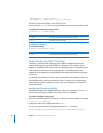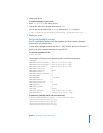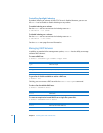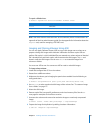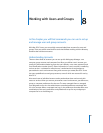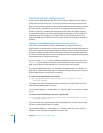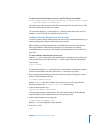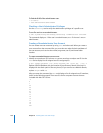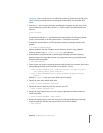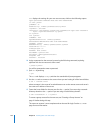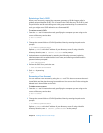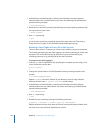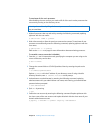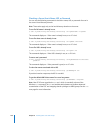
100 Chapter 8 Working with Users and Groups
To find the GUID of the administrator user:
> cd /Users/
> read
adminusername
GeneratedUID
Checking a User’s Administrator Privileges
Use the serversetup tool to verify the administrator privileges of a specific user.
To see if a user is a server administrator:
$ sudo /System/Library/ServerSetup/serversetup -isAdministrator
shortname
The command displays a 0 if the user is an administrator, or a 1 if the user is not an
administrator.
Creating a Nonadministrator User Account
You can create new user accounts by using dscl and other tools. When you create a
user account from the command line, you must also set values for basic attributes of
the user account, such as the short name, long name, user ID, and home folder
location.
To create a nonadministrator user account:
1 Identify an unused user ID. Each user on a server must have a unique user ID. Use the
dscl tool to display lists of assigned user IDs and group IDs.
$ dscl
/LDAPv3/ipaddress
-list /Users UniqueID| awk '{print $2}' | sort -n
Replace /LDAPv3/ipaddress with the location of your directory domain (the way it is
displayed in the search path in Directory Access). If you connect to a NetInfo domain,
replace UniqueID with uid.
After you enter the command, the dscl tool displays a list of assigned user ID numbers,
similar to the following output. These user IDs are for computer accounts that are
included with Mac OS X Server:
-2
0
1
99
25
26
27
70
71
75
76
77
78
79
501



